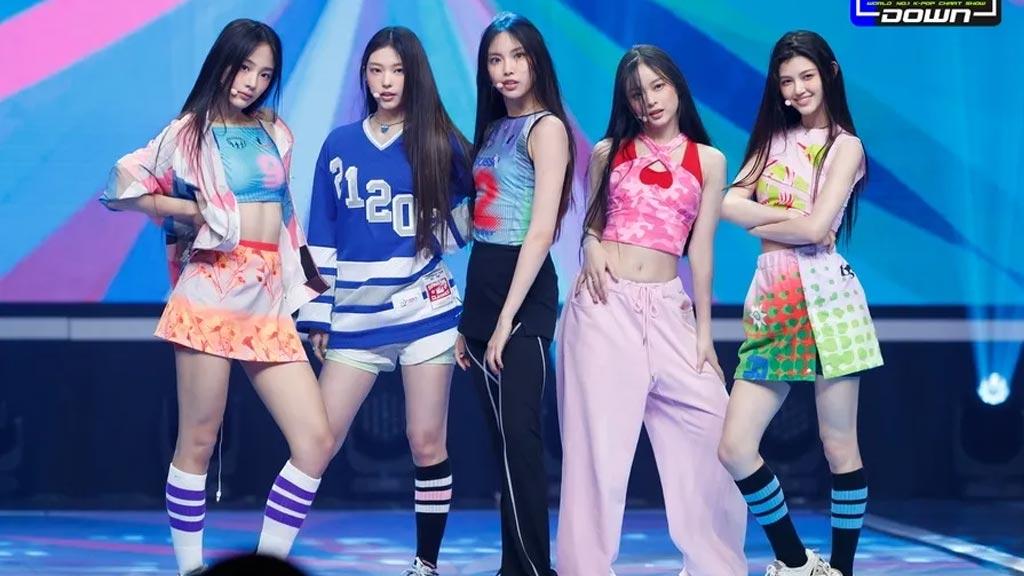In July 2025, something that once felt distant became reality again: BTS is back.
After an 18-month military hiatus, the world’s most influential K-pop group is finally reuniting, sparking global excitement and reflection. Their long-awaited return is not just a major pop culture moment, but also a turning point for an industry that has undergone significant shifts in their absence.
Over the past two and a half years, K-pop has experienced both growth and its share of growing pains. While new acts have risen to fame and the genre continues to thrive globally, deeper challenges have surfaced. From declining album sales and public controversies to mounting questions about how idols are managed and marketed, K-pop is experiencing it all.
As BTS fans around the world, from Seoul to São Paulo, gather to celebrate their comeback, one thing is clear: K-pop isn’t what it used to be in 2022. And BTS is not returning to the same stage they once ruled.
Their comeback offers a rare opportunity to assess how the genre has evolved and what role BTS might still play in shaping its future.
K-pop Then vs. Now: A Quick Snapshot
To understand the impact of BTS’s return in 2025, we first need to trace the evolution of K-pop over the past two decades. What began as a polished idol-training model focused on domestic popularity has become a fragmented, global, and constantly shifting ecosystem.
Early to Mid-2010s: The Idol Powerhouse Era (2nd Gen)
- Dominated by “Big 3” agencies: SM Entertainment, YG Entertainment, JYP Entertainment
- Rise of second-generation groups (TVXQ, Girls’ Generation, Big Bang, Wonder Girls, Super Junior)
- Characterized by:
- Highly synchronized choreography
- Group cohesion and strong visual branding
- Physical album sales + Korean broadcast dominance

2013–2020: The Global Explosion (3rd Gen)
- BTS, EXO, TWICE, BLACKPINK, SEVENTEEN lead the third generation
- K-pop breaks into Western mainstream: Billboard charts, YouTube milestones, global tours
- The “fandom economy” surges:
- Lightsticks (e.g., BTS’s ARMY Bomb), global fanbases, mass streaming campaigns
- Digital sales and fan engagement over local chart-topping
- Agencies shift focus to global content, multilingual releases, and social media virality

2021–2025: The New Frontier (4th & 5th Gen)
- Rise of 4th and 5th gen groups: ITZY, NewJeans, IVE, ATEEZ, ZB1, RIIZE
- Characteristics:
- Faster debut cycles, shorter group lifespans
- TikTok/Instagram Reels-style choreography highlights
- Experimentation with genre (hyperpop, retro, R&B-infused K-pop)
- Decentralized fandoms with overlapping allegiances
- Increased scrutiny of the idol system:
- Public controversies (e.g., company feuds, fan harassment, idol burnout)
- Growing demand for mental health support and transparency

BTS’s Military Hiatus: A Turning Point
In June 2022, BTS announced they would pause group activities to fulfill South Korea’s mandatory military service requirement for all men. It marked the start of an 18-month period that would test not only the group’s enduring appeal but also the structural integrity of the entire K-pop industry.
A Carefully Staggered Absence
Unlike many male celebrities who vanish from the public eye during enlistment, BTS managed their hiatus strategically. The members staggered their enlistment dates to ensure the group was never wholly absent from public consciousness.
- J-Hope, the first to enlist, also became the first discharged (Oct 2023) and later completed a solo world tour.
- RM, V, Jimin, and Jung Kook were discharged in June 2025.
- Suga, the final member to finish service, was released in July 2025.
Solo Acts
While they were in service at differnt times, BTS were never far from their fans. Thanks to a carefully orchestrated rollout of solo projects, it kept each member creatively active and culturally visible. J-Hope embarked on a global solo tour, RM released a reflective and critically acclaimed album, and Jung Kook’s chart-topping singles kept the group at the center of global pop discourse. Even in the absence of group performances, their individual work sustained BTS’s brand, deepened their artistic identities, and gave fans ongoing reasons to stay engaged.
Fan Events
Despite the physical distance, BTS never lost their emotional hold over fans. Events like the 2025 BTS Festa in Seoul drew international crowds from Brazil, the Netherlands, South Africa, and beyond. Fans queued for hours to experience voice messages from members in “voice zones,” often moved to tears. For many, just being in Korea, where BTS lived, trained, and grew, was an act of deep connection. The emotional intensity reflected not just fandom loyalty, but how deeply embedded BTS is in the lives of millions.
Yet, as devoted as the ARMY remained, the rest of the industry did not stand still. New idol groups debuted. Streaming platforms and media attention shifted toward younger acts.
Analysts and fans alike began wondering: had K-pop’s golden era peaked? Was the absence of BTS more than symbolic? That absence left a void that no other act could fully fill.
What Changed While BTS Was Away?
K-pop in 2025 is not the same as K-pop in 2022. In BTS’s absence, the genre evolved; sometimes in healthy, exciting ways, and sometimes in ways that exposed its fragility.
A New Generation Took the Spotlight
The most noticeable change came from the generational shift. Fourth- and fifth-generation groups, such as NewJeans, IVE, ATEEZ, and ZB1, rose to prominence, especially among younger fans. These new idols embraced a different kind of fame, one built less on long-form storytelling and more on fast-paced virality. Platforms like TikTok have become the new front lines of fandom, where choreography snippets and visual hooks often matter more than whole albums. To a new cohort of teenagers, BTS, once the vanguard of innovation, now feels like representatives of an earlier era.
Album Sales and Market Growth Slowed
At the same time, the industry began to show signs of fatigue. Album sales, a key measure of K-pop’s commercial health, reached their peak in 2023 but started to decline shortly after. Despite continued strong performance in concert revenues, the downturn in physical album sales sparked concern.
After nearly a decade of uninterrupted growth, South Korea’s album market experienced a significant downturn in 2024. According to data from Circle Chart, the country’s official music sales tracker operated by the Korea Music Content Association, cumulative sales for the Top 400 albums dropped by more than 19% year-over-year.

The market, which reached an all-time high in 2023 with 115.7 million physical albums sold, fell to 93.3 million units in 2024. That drop marks the first decline in album sales since 2014 and brings the market back below the symbolic 100 million milestone, which had only just been crossed for the first time a year earlier.
For an industry that has long depended on collectible packaging and bulk fan purchases, the slowing momentum raised uncomfortable questions about sustainability, especially in the absence of headline acts like BTS and BLACKPINK. Their absence from group promotions in 2024 coincided with the slump, suggesting that even K-pop’s robust physical sales model isn’t immune to star-power gaps or shifting consumer habits.
Controversies and Agency Turmoil
Meanwhile, a series of controversies shook public confidence in the idol system. The most high-profile was the internal power struggle between HYBE and ADOR, NewJeans’ label, which played out publicly and unsettled even loyal fans. Allegations of idol mistreatment, mental health neglect, and toxic fan behavior added further layers of complexity. Cultural critics began to speak more openly about the darker sides of the K-pop machine.
Growing Maturity and Mental Health Awareness
Finally, there was a noticeable shift in tone. More artists began to open up about burnout, vulnerability, and the mental toll of being an idol. The once-rigid image of the perfect, unreachable star has slowly given way to a more transparent and emotionally honest portrayal of celebrity. BTS had long championed this direction through their lyrics and solo work, and now return to an industry that is more prepared to hear it, but also one that expects them to lead by example.
BTS’s Comeback: More Than Nostalgia
With their military duties now behind them, BTS is no longer on pause; they’re gearing up to hit play again. But rather than rushing into a flashy reunion, the members are carefully crafting a multi-layered return, blending solo artistry with long-term plans for a full-group revival.
Leader RM, fresh off his discharge in June 2025, has already hinted at new music. Industry insiders expect this to take the form of another introspective solo project, an extension of his personal, poetic style. J-Hope has wrapped up a successful solo tour and is reportedly preparing to release new material before the year’s end. Jin, the oldest member, is expected to hold fan concerts in multiple countries later this year, giving fans an early taste of the group’s presence before a full comeback.
Suga, who recently completed his service, is likely to lie low for a while following a minor controversy last year. But his acclaimed production and songwriting skills remain a quiet force behind the scenes. Meanwhile, Jimin, V, and Jung Kook, each of whom dropped solo albums or hit singles during the hiatus, are rumored to be working on follow-ups that blend global pop with more experimental sounds.
As for the group comeback? While fans eagerly await it, the most realistic timeline appears to be Spring 2026. That gives the members time to complete ongoing solo schedules, recalibrate as a team, and plan a strategic return that includes a full album and possibly a world tour. HYBE, their label, is already laying groundwork behind the scenes, signaling that this won’t be a one-off reunion, but the start of a new chapter with a more mature, globally calibrated BTS.
“Starting in July, all seven of us will begin working closely together on new music. Since it will be a group album, it will reflect each member’s thoughts and ideas.”
This comeback isn’t just about picking up where they left off, it’s about evolving with intention. And based on what we’ve seen so far, BTS isn’t aiming to resume their old position, they’re preparing to redefine what K-pop longevity looks like.
Can BTS Reclaim K-pop’s Center?
As BTS reenters the spotlight, the most pressing question isn’t just whether they can return to success, they already have a global fanbase ready to support them. The real question is whether they can reclaim the central cultural and commercial role they once held, at a time when K-pop is more fragmented and less reliant on singular supergroups.
The Challenges
Historically, BTS wasn’t just a successful act, they were the gravitational force of K-pop’s third generation. Their achievements weren’t measured only by album sales or sold-out stadiums, but by how they reshaped global perceptions of Korean music, built a multilingual, transnational fan community, and pioneered new models of artist-fan interaction through platforms like Weverse and Twitter. Repeating that feat in 2025, however, will require a different strategy.
Another significant factor is reentering this landscape as a group of late-20s and early-30s artists poses risks. While BTS has always thrived on fan loyalty, they must now rebuild group identity with fans who’ve grown older, and reintroduce themselves to younger audiences raised on NewJeans and ZB1. The challenge isn’t simply returning to relevance, it’s adapting without diluting what makes them BTS.
Today’s K-pop landscape is defined by shorter attention spans, platform-driven virality, and a more casual fan culture. Fans are just as likely to support multiple groups as they are to build lifelong loyalty. Music is consumed in seconds-long snippets, and choreography is built for TikTok, not arena stages. Even megastars risk being swept aside by the next viral trend. This means BTS can no longer rely solely on nostalgia or past accomplishments, they’ll need to innovate again.
The cultural dominance that BTS once enjoyed is now contested by dozens of acts, many of whom tailor their content for short-form consumption rather than long-term artistry.
But Also Opportunities
At the same time, the group’s age and maturity—once seen as a liability in a youth-centric industry, could become a strength. Each member returns with more life experience, more control over their craft, and a deeper understanding of their audience. They’re not chasing virality—they’re building legacy. And in an era when fans increasingly crave authenticity and emotional connection, BTS’s longstanding message, about self-worth, resilience, and vulnerability, feels more relevant than ever.
The industry itself is also more open to evolution. Mental health is no longer a taboo topic. Artist rights and creative control are now mainstream discussions. These shifts echo the values BTS championed early in their careers, giving them a natural platform to lead not just musically, but structurally. Their next chapter could challenge the K-pop formula entirely, offering fans something more profound than manufactured perfection: real-time growth.
Of course, logistical hurdles remain. With some members still focused on solo concerts (J-Hope, Jin), and others like Suga likely taking time to lay low after last year’s scooter-related controversy, a full-group comeback may not materialize until early 2026. But even without a synchronized return, their presence is already being felt. Media cycles have shifted. Fan anticipation has surged. And the industry is watching—closely.
If BTS can pull off this transition, balancing personal growth with group synergy, maturity with mass appeal, they could not only reclaim their central role but redefine what long-term success in K-pop looks like. Their challenge now is not to dominate, but to evolve. And if their track record is any indication, they just might do both.
They are already breaking the internet!
Conclusion: K-pop at a Crossroads
BTS’s return in 2025 is not simply a comeback; it’s a moment of cultural reckoning. For over a decade, the group has been more than just entertainers; they’ve been architects of K-pop’s global rise, symbols of its potential, and voices for a generation navigating identity, pressure, and change. Now, as they reunite amid a shifting industry, their presence is both a comfort and a challenge.
K-pop today is more diverse and dynamic than ever, yet also more fragmented, fatigued, and uncertain. New groups debut constantly, but few command the sustained global attention that BTS once did. Meanwhile, the ecosystem surrounding idols has become more volatile, with corporate infighting, ethical concerns, and shifting fan behaviors demanding a different kind of leadership.
This is where BTS’s comeback matters most, not simply to top charts or fill stadiums, but to recenter the genre on its core strengths: storytelling, sincerity, and connection. Their return is a reminder that success in K-pop doesn’t have to mean constant reinvention at breakneck speed. It can also mean growth, reflection, and staying power.
For fans, this moment is deeply emotional. But for the industry, it’s a signal: that amidst all the noise and churn, the artists who last are the ones who mean something beyond the music. BTS may not return to the same world they once ruled, but that’s precisely why their return could shape what K-pop becomes next.
As leader RM said upon discharge:
“I will quickly make an album and return to the stage.”
The world will be watching, not just to see what BTS does next, but to see what K-pop chooses to become.
If you’re looking to promote your products and connect with international buyers, please don’t hesitate to contact us.










